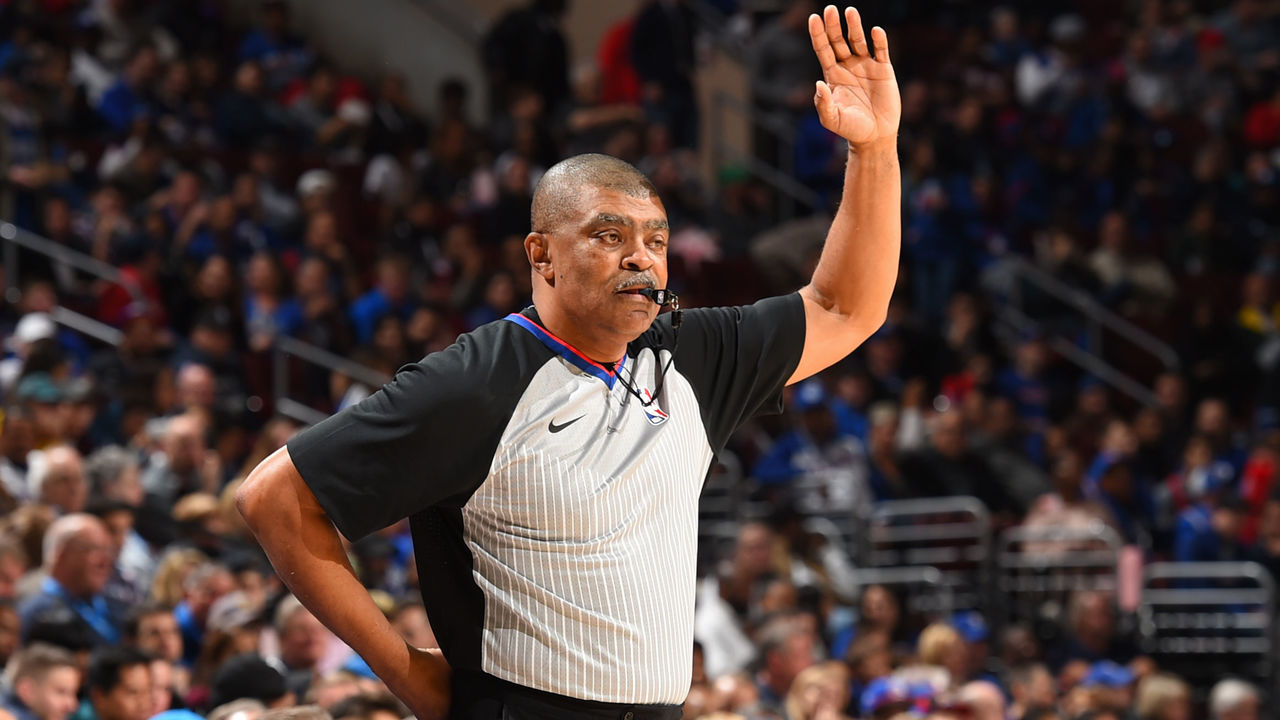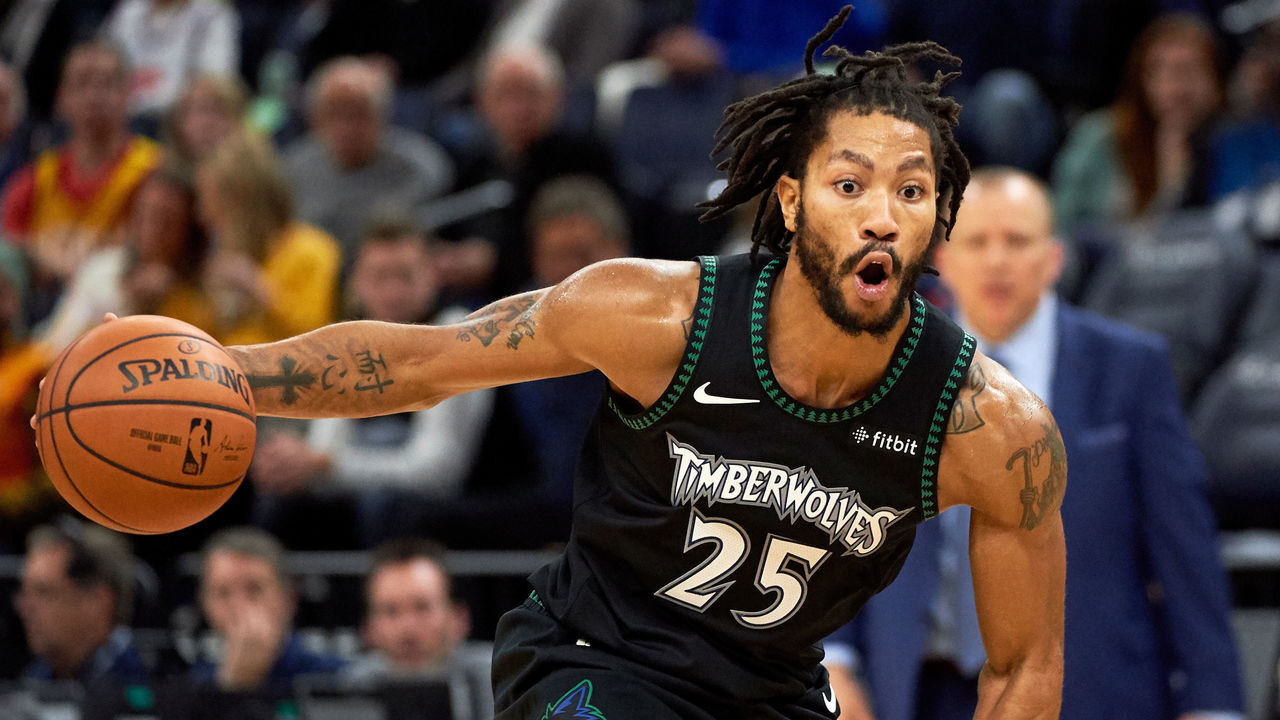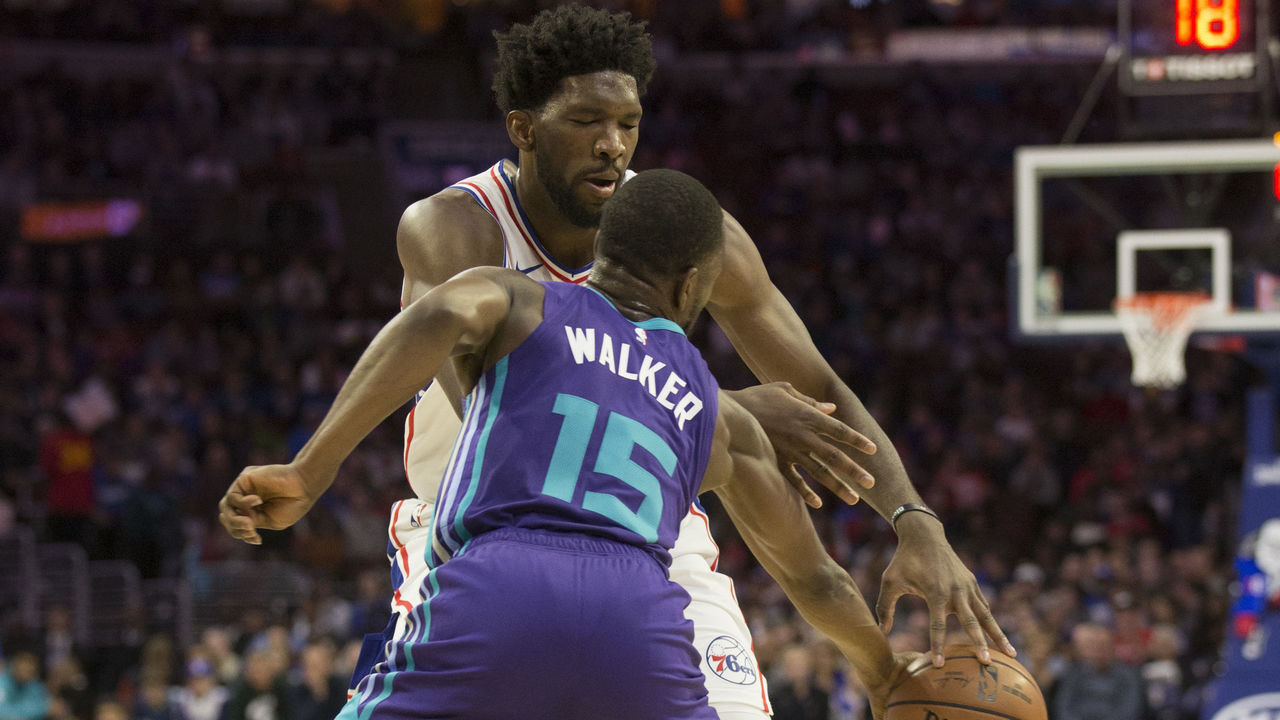Get buckets: Digging into the NBA's offensive explosion
It's a Friday night at Smoothie King Center and the seconds are ticking away in the New Orleans Pelicans' home opener. Sacramento Kings guard Frank Mason III penetrates the Pelicans' defense and finds an open Iman Shumpert in the corner for three, putting the finishing touches on a 129-point performance for the Kings ... in a game they'd lose by 20.
Welcome to the 2018-19 NBA season, where an offensive explosion - the likes of which even basketball's maddest scientists (except for maybe NBA Jam) couldn't have envisioned - is underway.
After one month of action, the league's in the midst of its highest-scoring campaign in 34 years, according to Basketball Reference, with teams averaging 110.6 points per game. There are 8.6 more (combined) points being scored in each contest compared to last season - the type of year-to-year jump that hasn't been seen across two full seasons since the late-1960s.
So, what's causing the sudden, dramatic scoring spike? More importantly, is it here to stay?
14 seconds or less

An obvious place to start is the blazing speed at which the game's being played. Teams are averaging more possessions (100.2) league-wide than in any full season over the last 30 years, and the three full possessions each offense has added per contest would make for the second-biggest year-to-year jump in Basketball Reference's advanced-stat archive that dates back to 1973-74 (the biggest occurred between the clunky lockout-shortened 1998-99 season and the following campaign).
To put things in perspective, the "Seven Seconds Or Less" Phoenix Suns - the 2004-05 team largely credited for the offensive revolution bearing fruit right now - would rank 29th in pace this season.
"I cannot believe that," Toronto Raptors head coach Nick Nurse told theScore before an early-season home game. "Like, do you remember how fast and exciting that (Suns era) was? I remember people in Iowa being like, 'I gotta go home and watch the Suns play.' No connection to the Suns at all, but they were so fun to watch at that point. It's really something, the pace (today)."
Pelicans head coach Alvin Gentry, a Suns assistant for the first chunk of that high-scoring era before later serving as their head coach, can only laugh when thinking about how far the game's come since Mike D'Antoni's team was viewed as more of an experiment than a revolution.
"Just like anything else, it's kind of a trendy thing around the league," Gentry said. "Everybody's playing faster. They're even doing it in hockey. Hockey's playing much faster. It's not this brute sport that it used to be. Everybody seems to want to get out and play fast. It's really a fan-friendly way of playing, and I think (players) appreciate it."
Count Gentry's star point guard among those players.
"For me, it's fun," Jrue Holiday told theScore after the Pelicans won in Toronto this week. "Whoever gets the ball, you get a chance to go and break it out. It's more scoring. You get more shots up. Coaches want us - the league all around - just want us to play faster. It's not so much about setting up your offense. It's just about running to space, and being able to play at that pace.
"It gives everybody a chance to play smart, make the right reads, have chemistry with your teammates, and everybody gets the chance to score. That's definitely fun."
A more accurate measure of pace than simply using possessions per game is average seconds per possession, a metric that further highlights the league's speed boost this season.
Between the 1996-97 and 2014-15 seasons, the average length of a possession fluctuated between 15.1 and 15.8 seconds, according to stat-tracking site Inpredictable. Then, in the three seasons prior to this year, that number crept down to 14.9, 14.8, and 14.7. So far in 2018-19, the average length of a possession is all the way down to 14.2 seconds. (For what it's worth, those Steve Nash-led Suns teams would still rank in the top three in this regard.)
"I think everybody in the league now is playing with a smaller lineup," Gentry added. "That 4-man (power forward) used to be a 3-man (small forward), and they're spreading the floor."
Efficiency's the name of the game

Smaller lineups that are better equipped to run and gun on offense, and to switch on defense in hopes of neutralizing powerhouse scoring machines like Golden State, help explain the game's quicker pace. In turn, that pace helps explain the increase in total points. After all, it doesn't take a rocket scientist to figure out that more possessions usually lead to more buckets.
But there's more to this story, as the display we're witnessing isn't merely a tale of teams scoring more. They're scoring better.
"It's not so much how fast you're playing as it is how efficient you're playing," Minnesota Timberwolves head coach Tom Thibodeau told theScore. "The most important thing is to be efficient."
To Thibodeau's point, the NBA's currently enjoying its most efficient scoring season - by far - in Basketball Reference's archive:
| Season | Pts per 100 poss. |
|---|---|
| 2018-19 | 109.6 |
| 2016-17 | 108.8 |
| 2017-18 | 108.6 |
| 1986-87 | 108.3 |
| 1994-95 | 108.3 |
There are a few fairly straightforward explanations for this, beginning with the fact that NBA teams have never been better at taking care of the ball. As of Tuesday, they've turned it over on just 12.7 percent of possessions league-wide, tied for the lowest rate in Basketball Reference's archive.
There's also the barrage of 3-point shooting.
"Our sport is incredibly influenced, every year more and more, by analytics," Philadelphia 76ers head coach Brett Brown said. "When you judge what is an efficient shot, and what's the best way to put points on the board, the 3-point shot features. Everybody is seeking threes, everybody is hunting threes, they're trying to find big men who can shoot threes. You're seeing a trend where it's a five-out sport now with the elite teams. Just five people on the perimeter. The low-post play is kind of going away."
The league's on pace to set a new record for 3-point attempts for the eighth consecutive season, and the year-to-year increases are only growing more drastic.
It took 16 years from the debut of the NBA 3-pointer in 1979-80 for any team to average double-digit attempts per game over an entire season. It took another 18 years to reach a league average of 20 long-range tries per game. But in just six seasons since then, the average has ballooned to 31.4 3-point attempts per game, with more than 35 percent of field-goal tries now coming from beyond the arc.
Take Nurse's Raptors, for instance. They finished third in 3-point attempts last season at 33 per game. They've increased that number to 34.6 this year, a mark that would've set the all-time record as recently as three years ago. This season, it ranks seventh.
Freedom of movement

While teams are prioritizing 3-point attempts and shots at the rim in lieu of lower-percentage mid-range tries, coaches and players both point to another explanation for this season's record-setting efficiency: The league's officiating crackdown on freedom of movement, which is meant to prevent defenders from illegally impeding the progress of offensive players, especially away from the ball.
"I think right now, offensive players are allowed to get away with a lot more than defensive players. They're using their shoulders, pushing off, things like that - things that they use to create space," Thibodeau said. "We've all seen it. The '90s were a slugfest. It was very unusual for someone to get to 100 (points). The game got too bogged down, so I think the (2004) rule changes (curtailing hand-checking and instituting defensive three in the key) opened the game up a lot more, and brought a lot more speed and skill into the game.
"And I think we were starting to trend maybe a little bit the other way (again). Now I think the freedom of movement is good for the game. We have world-class athletes that can do amazing things."
On the surface, officiating doesn't seem to be influencing scoring as much as advertised. Sure, the 22.4 fouls per game that teams are averaging would be the highest mark in 13 years, but consider the additional possessions in each contest and that teams are currently producing the seventh-lowest free-throw-attempt rate (20.6 FTAs per 100 FGAs) of all time.
Dig deeper, however, and you can see how prioritizing the freedom of offensive movement can impact scoring, even when it's not resulting in a parade to the foul line. Teams and players might find themselves in foul trouble earlier due to off-ball calls that don't lead to free throws, which could lead to more passive defending as quarters and games wear on, and offensive players now generally encounter fewer obstacles in their path.

"You can't touch nobody no more," Timberwolves guard Derrick Rose said. "They want an easygoing game, where anybody can score 20 points. Imagine Michael Jordan was playing now, what he would average with a hands-free-type game?
"They want a more exciting game. I understand it, but at the same time, you have to give the defender some room to actually try to get physical. A guy's getting 30 points on you in the first half, you're going to be mad. I get both sides, but somewhere down the line, toward the playoffs, you have to empower the defender in some way where he feels comfortable enough to play a little bit physical without having to double-team. You have to be able to even up the game so that the defensive player has a little bit more confidence playing the way he knows how to play."
When asked if he can at least appreciate the officiating on the offensive end, Rose paused.
"At this stage of my career, I'm in the position where I don't need to be scoring 20 points a night," he said. "I know I'm going to be playing defense more than I score."
In an ironic twist befitting the season's wild opening month, Rose would go on to score a career-high 50 points against the Utah Jazz - who boasted the league's No. 1 defense last season - a week after our conversation.
The league and its officials will offer a few counterpoints. Refs are also watching to ensure offensive players are behaving legally (traveling is one of the points of emphasis this season), and the crackdown on freedom of movement isn't a rule change. It's merely an enforcement of already-present guidelines that were being somewhat neglected.
"It does make our game more beautiful, and it makes it more watchable, and it makes it more to its roots, which is (that) basketball is a game of position, and footwork, and movement," Monty McCutchen, the NBA's head of referee development and training, recently told The Athletic's Sam Amick. "When it is done best, it's done out of a sense of movement, and that's possible because the rules get enforced as they are written in our rule book."
Ain't no stopping now

More possessions, fewer turnovers, more 3-pointers, and offensive players being given more freedom to get to their spots - it sounds like a recipe for the type of eruption fans are currently enjoying.
Are we missing anything? According to Charlotte Hornets All-Star Kemba Walker, only the easiest explanation.
"Guys work hard on their games. That's it," Walker said. "I just think guys work hard on their games over the summer, and hard work pays off."
Walker added that it takes defenses time to catch up to offensive improvements, something Sixers sharpshooter J.J. Redick echoed.
"Any time you have four shooters on the court and at least one guy who can attack, I mean, that's hard to guard," Redick said with a sigh, as if considering the impossibility in that moment.
Redick's coach took it a step further.
"It's a tremendous challenge for even the best defenders - the Kawhi Leonards - to go guard a Kevin Durant," Brown said. "I think offense has the advantage. So to load up all on defense and think that's gonna bring you to the promised land, I don't think so. You're gonna need balance, but it's probably going to tilt toward offensive firepower and the 3-point line."
The final question, then, is this: How sustainable is the explosion? Is what we've witnessed over the season's opening month the peak - years worth of offensive progress culminating in the sonic boom before us? Or are we only scratching the surface of a new normal for the remainder of this season and beyond?
"Very (sustainable)," Dallas Mavericks head coach Rick Carlisle said with a laugh. "When you're marching out four guys - really, in many cases it's five - with speed, quickness, and long-range skill, and teams are going 10-deep pretty much on a nightly basis, I see it being more sustainable than unsustainable."
When asked what it would take to get things trending in another direction, Brown nods his head toward the 76ers' locker room.
"Joel Embiid," he quipped. "When you get Shaquille O'Neal, Joel Embiid, you're gonna try to go inside and use that. Otherwise, dumping it down to a B-minus or C-plus post player isn't efficient. This is the sport that we play in the NBA nowadays. There are ways to embrace it, and there are ways to try to correct it, and I think, by and large, most people nowadays are embracing it."